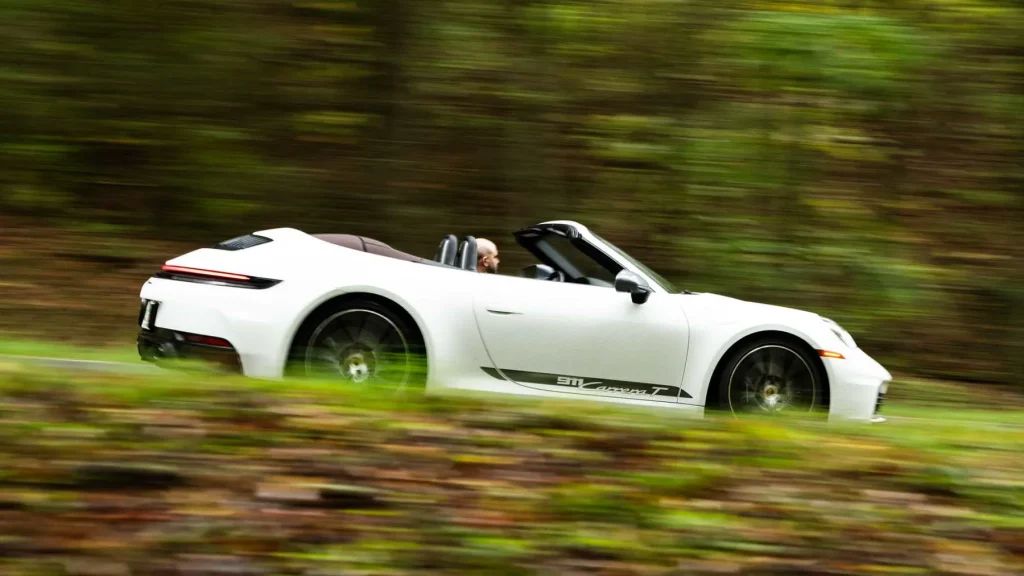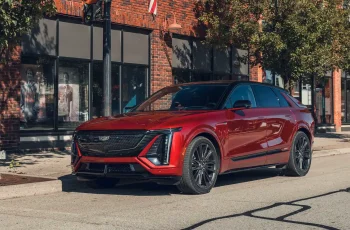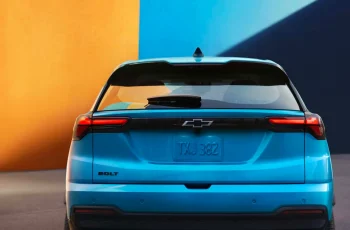Porsche continues to push the boundaries of internal-combustion engine design with a recently filed patent for an innovative W-18 engine configuration. Unlike typical W engines found in other high-performance vehicles, this new design employs three distinct cylinder banks arranged in a true “W” shape, potentially accommodating up to 18 cylinders. While the company has not announced plans to bring this engine to production, the patent offers a fascinating glimpse into Porsche’s engineering ambitions and its continued commitment to exploring high-performance combustion technology alongside the growing push for electrification.

The Architecture of a W-18 Engine
The standout feature of Porsche’s patent is its unique cylinder arrangement. Traditional W engines, like Bentley’s historic W-12 or Bugatti’s W-16, use four cylinder banks, often resulting in a more complex layout. Porsche’s W-18, in contrast, utilizes three inline-six cylinder banks positioned at 60-degree angles relative to each other. This configuration forms a true W shape and allows for one turbocharger per cylinder bank, creating a tri-turbo setup. Conceptually, the W-18 can be imagined as three inline-six engines sharing a single crankshaft, combining the power density of multiple engines into a compact, cohesive design.
Potential Performance Advantages
Although Porsche has not disclosed specific performance figures, the W-18 configuration offers several theoretical advantages. The straight cylinder banks could reduce frictional losses in intake airflow, improving efficiency and throttle response. Separating the intake and exhaust pathways may help maintain cooler intake air temperatures, which can further enhance combustion performance and reduce the risk of knock. This design approach suggests Porsche is focused not just on raw horsepower but also on optimizing efficiency and reliability in a high-performance package.
The tri-turbo arrangement could provide significant boost flexibility, allowing each cylinder bank to be independently tuned for optimal airflow and pressure management. In practice, this might translate to improved acceleration, smoother power delivery, and higher overall engine responsiveness. Even without concrete numbers, the engineering principles behind the W-18 concept indicate a careful balance between extreme performance and intelligent thermal management.
Flexibility in Cylinder Count
Interestingly, the patent does not lock Porsche into using exactly 18 cylinders. According to the filing, the engine could potentially be scaled up or down, offering flexibility for different applications. This opens the door for variants that balance power output with packaging constraints, enabling the potential use of the W architecture in both hypercars and high-performance GT models. Such adaptability aligns with Porsche’s broader engineering philosophy, where modular design and scalable performance are increasingly critical in modern automotive development.
Where the W-18 Might Fit
Porsche has not linked the W-18 patent to any specific vehicle project. Given the company’s history, it’s possible this engine remains a conceptual exercise or a platform for future experimentation rather than an imminent production model. Nevertheless, the engineering concepts demonstrated could influence future sports cars or hypercars, particularly those where extreme power density and sophisticated turbocharging are desirable. Even if the W-18 never reaches production, its tri-turbo layout and three-bank design may inspire innovations in next-generation V8 or V12 engines, or even hybrid powertrains that integrate combustion and electrification seamlessly.
The Relevance of Internal-Combustion Research
The introduction of a W-18 patent underscores that, despite the rapid rise of electric vehicles, some automakers remain invested in the future of internal-combustion technology. Porsche, known for its high-performance sports cars, is continuing to explore unconventional engine formats to push the limits of mechanical engineering. By experimenting with unusual cylinder layouts, turbocharging configurations, and airflow optimization, the company ensures that it remains at the forefront of performance innovation—even in an era increasingly dominated by battery-electric vehicles.
Engineering Challenges and Considerations
Designing a three-bank W-18 engine is not without challenges. Packaging such an engine in a vehicle chassis requires careful consideration of weight distribution, cooling, and drivetrain integration. Turbocharging three separate banks independently adds complexity, necessitating advanced engine management systems to ensure balance, reliability, and responsiveness. Additionally, noise, vibration, and harshness (NVH) must be meticulously controlled to maintain the refined driving experience Porsche customers expect. These factors highlight why patents like the W-18 are as much about exploring technical possibilities as they are about immediate production feasibility.

Looking Forward
While Porsche has not confirmed production plans, the W-18 patent offers a compelling look at the brand’s ongoing dedication to pushing the envelope of combustion-engine design. Whether this engine eventually powers a limited-run hypercar or serves as a testbed for future turbocharging technologies, it exemplifies Porsche’s relentless pursuit of engineering excellence. For enthusiasts, the idea of an 18-cylinder tri-turbo Porsche engine evokes images of unprecedented performance, dramatic exhaust notes, and an unmistakable mechanical symphony that only a pure internal-combustion powerhouse can deliver.
Even in a world moving toward electrification, patents like the W-18 remind us that there is still room for innovation in combustion engines. Porsche’s tri-turbo W-18 could represent the pinnacle of internal-combustion experimentation, combining cutting-edge turbo technology with a unique and efficient cylinder configuration. Whether or not we ever hear this engine roar on public roads, it remains a tantalizing glimpse into the future of high-performance automotive engineering.



